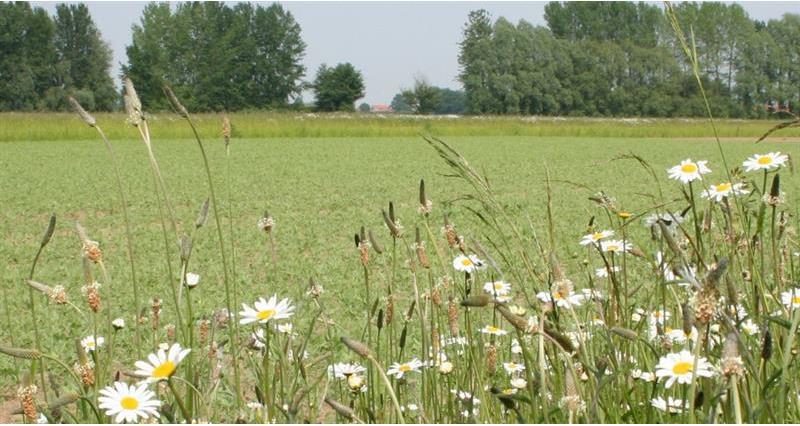What
Sow grass or cease management to allow longer vegetation to develop in small areas up to 0.5ha in field corners.
Why
- Grassy field corners with mixed vegetation can provide nectar and pollen in the summer to benefit a variety of insect species, including pollinator and pest predators.
- Higher numbers of insects will also support insectivorous breeding birds and in the winter the rough vegetation will provide key habitats for overwintering insects.
- Tussocky grass can also be valuable for small mammals, reptiles and amphibians. When established alongside other high value habitats (such as thick hedgerows, patches of small woodland or scrub, or close to ponds) they create a smooth transition between the natural and farmed areas.
- Field corners also provide suitable cover for species such as grey partridge.
- Taking awkward field corners and other difficult-to-access areas our of production can improve efficiency within the productive farm business.
- Grassy field corners in risk-areas (e.g. by watercourses or at the bottom of slopes) can also create a barrier to prevent input run-off and soil erosion.
How
Choose your field corners
Where possible, select field corners close to other habitat features such as scrub patches, woodland, hedgerows or watercourses to help to create habitat corridors in the landscape.
Management
Avoid cutting annually; ideally grassy field corners should be cut every 2-3 years to develop a diverse sward.
Where possible, leave some areas uncut each time as a refuge for wildlife.
- You can also use a pollen and nectar mix or wildflower mix in field corners to increase wildlife benefits.
- Watercourse buffer strips, beetle banks, in-field grass strips and winter cover crops can also help prevent run-off and erosion.
